Planner helps organizations to better plan and manage teamwork, schedule events, vacations, and bookings, and generate workload and timesheet reports.
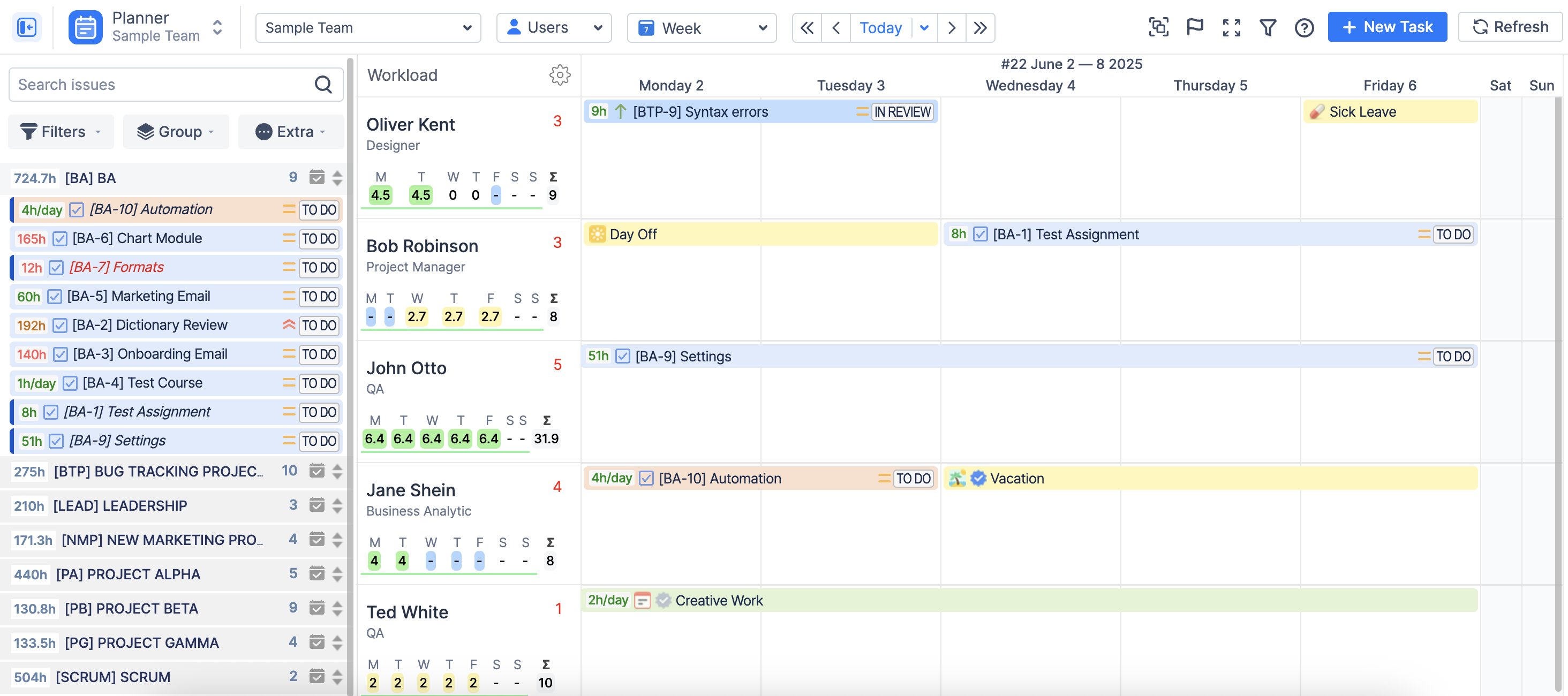
Required permissions
-
Administrator Role;
-
Manager Role;
-
Power Employee Role;
-
Employee Role - can see only Teams he/she belongs to;
-
Limited Employee Role - able to access and see his/her Timeline only;
-
Team Manager Role - can see only Teams he/she belongs to or manages.
Planner consists of two main parts: Issues Panel on the left and Timeline Panel on the right.
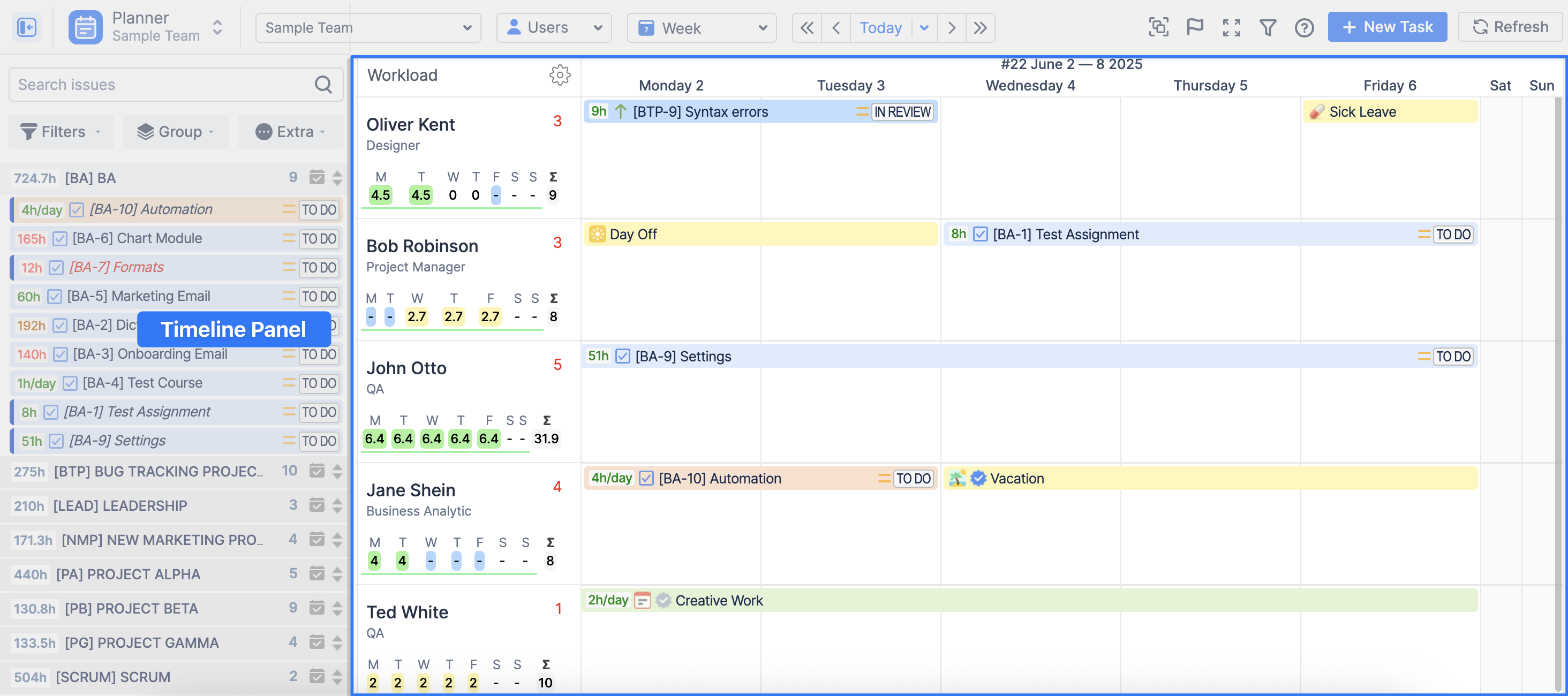
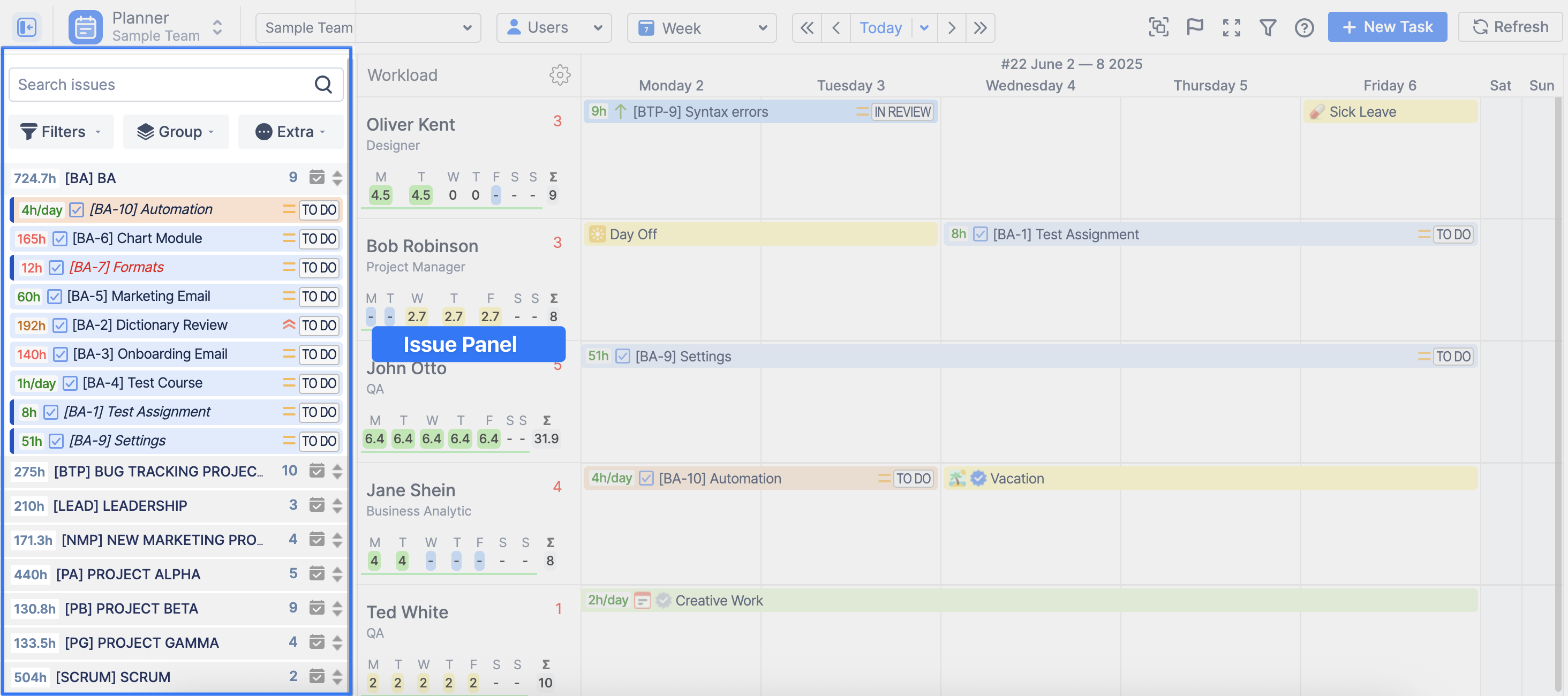
Issue Panel
On the Issues panel each Jira ticket appears in a separate blue bar:
3 icons correspond to Issue Type, Issue Priority, and Issue State.
Additional icons - Sub-task and Parent Task - indicate that a ticket is of Sub-task issue type and its parent correspondingly.

In the example above 16h (= 16 hours) value in green corresponds to the remaining time estimate defined in Jira issue. If the ticket does not contain the estimate in hours, Issue Type icon appears next instead of the estimated value.
The number of days left to the Due Date appears to the right of the blue bar (see as an example above). The due date on the ActivityTimeline corresponds to the default due date value defined in Jira ticket. If the due date is already missed, the days value will appear with a minus, and the Issue field will become red-colored indicating the negative number.
All about Filters, Group, Sort, and Extra tab you can find on Left Issues Panel page.
Timeline Panel
Timeline Panel allows managing the current and future tasks. It has a calendar view with each row corresponding to one person with his/her timeline, and each column corresponding to a particular day of a week or week of a month.
Several timeline options are available from the Calendar dropdown list: Week, Two Weeks, Month-Daily, Month-Weekly, Two Months, Quarter, Half a Year, Year, and etc.
In the example below, Week and Month Daily options are selected. One column corresponds to the day/week/month depends on the selected view.
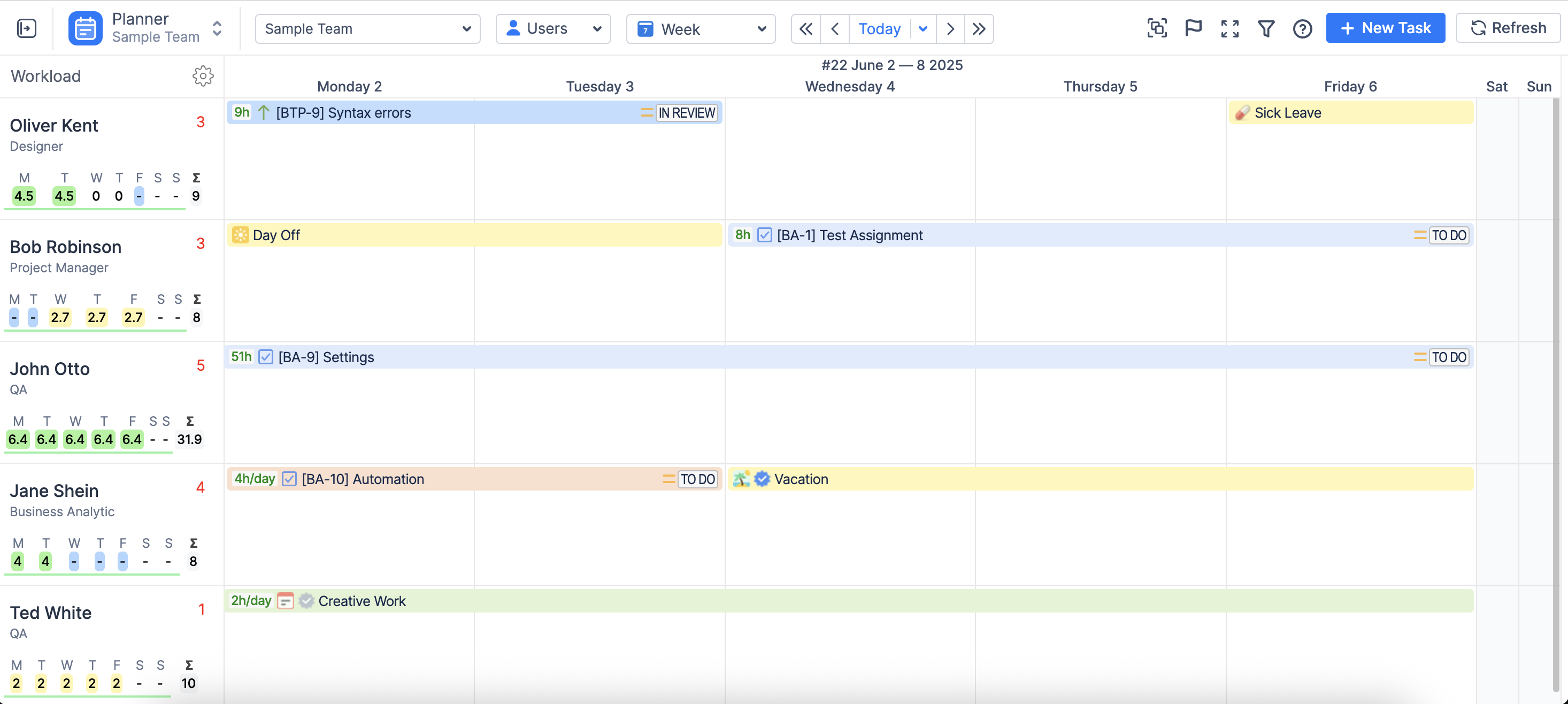
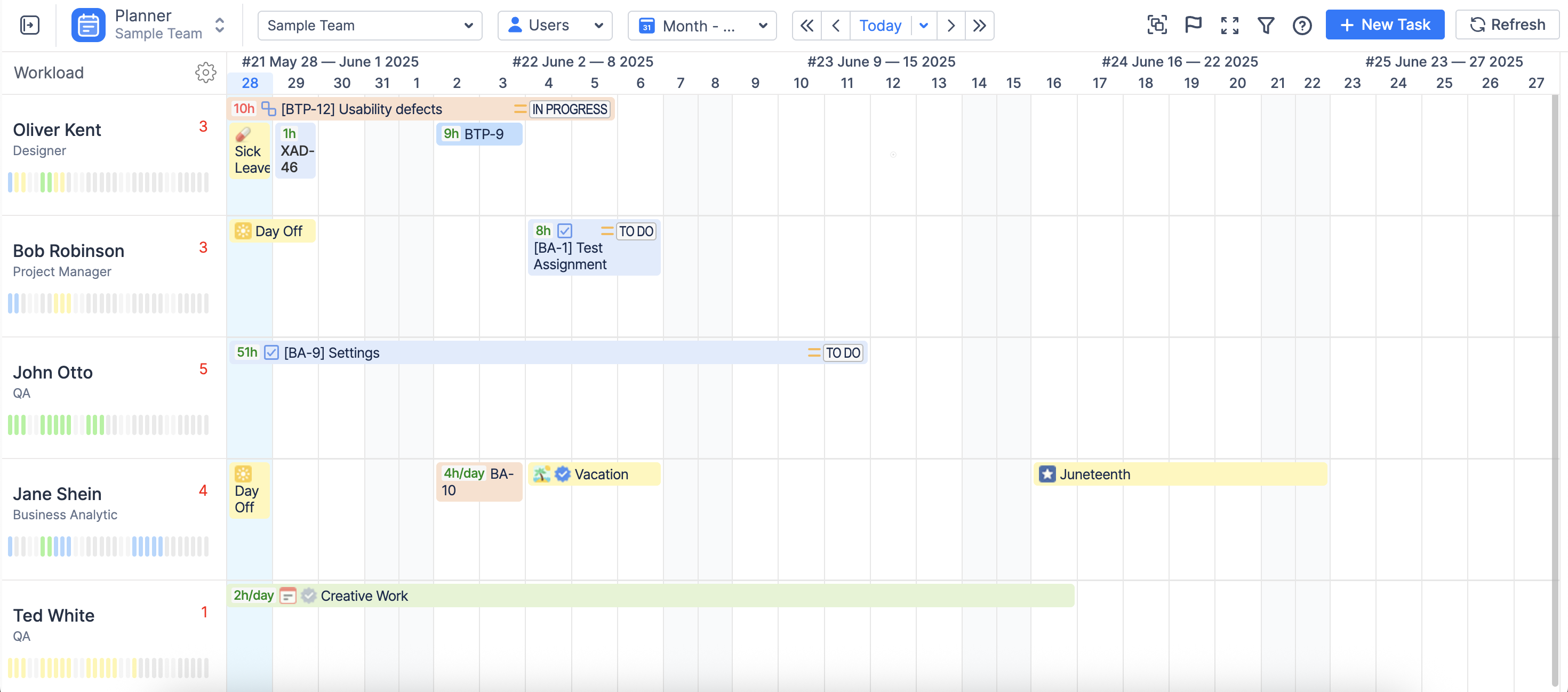
Month-Weekly is the optimal view if a large amount of work should be planned ahead.
Operations on the Timeline
Milestones Panel
The Milestones Panel is an additional panel appearing above the team members' timelines. A milestone is a special event that requires special attention or high-level data like releases, demos, deadlines, events, etc.
Milestones can add significant value to project scheduling. They represent if a project is on schedule. There are three ways to add a Milestone:
-
Create Milestone on the Milestones Panel by clicking on it;
-
Set a Due Date in Jira issue;
-
Select a project to see Fix Versions.
By default, the Milestones Panel is hidden from the dashboard. To open it, click on a flag icon on the right panel toolbar.

Click on an empty cell in the Milestones Panel to open a dialog for a new item creation.
To create your own event type navigate to the Milestones Event Type page or choose from the list of available options: Milestone, Event, Release, Delivery, Deadline.
The milestone panel also gives the possibility to visualize sprints of the selected SCRUM boards. Click on the ⚙️ icon to choose the boards to display.
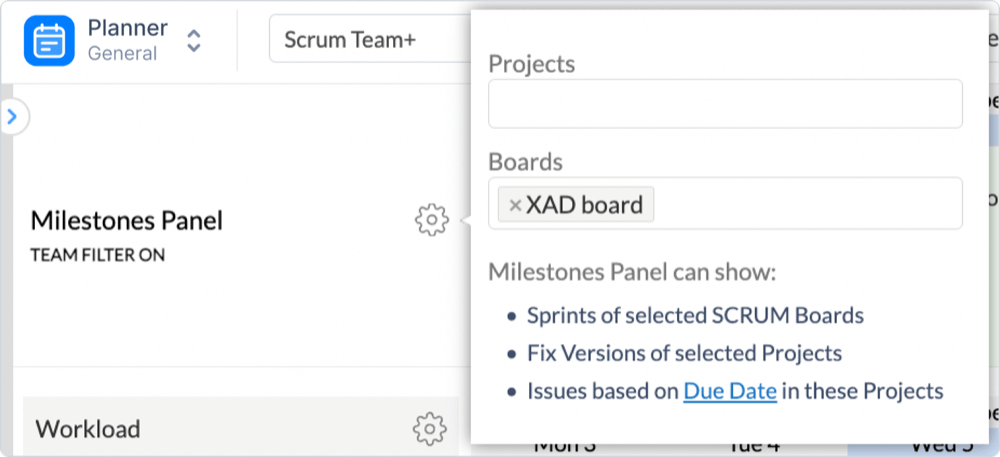
Sprint will be shown for its whole duration (Based on its Start and End date).

Issue Card
Issue Card displaying the main information about Jira issues or any event on a Dashboard or on a Left Panel.
Issue Card can be opened by clicking on the issue on the Left Panel or on the Dashboard.
On the Issue Card you can find the following information:
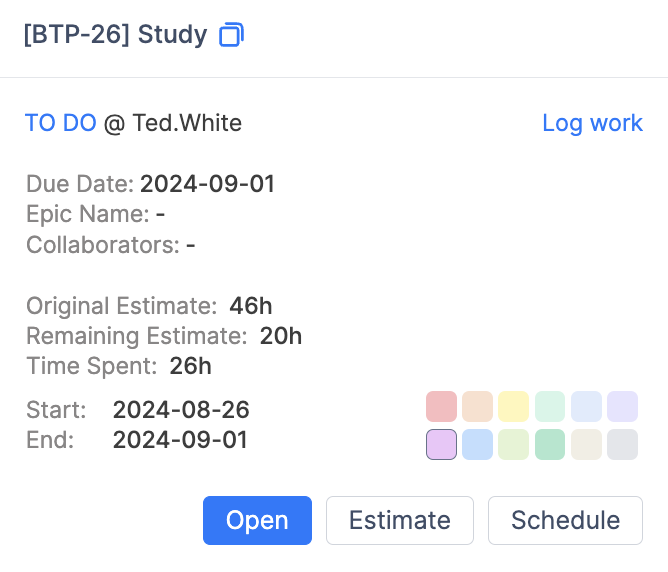
All fields possible to customize (show or hide) on Issue Card (for Admin role). To read more about the Issue Card go to Issue Card page or on how to customize the Issue Card go to the Issue Card Appearance page.
From the Issue Card dialog, you can:
-
Change the Status of the task
-
Change Assignee
-
Log work
-
Set or Change Estimate
-
Set or Change Start/Due dates
You can read about logging work on the Worklog, Estimate, and Time Tracking page.
Personal Information and User Card
ActivityTimeline add-on allows seeing skills and levels on the users' profiles on Work page. Only ActivityTimeline administrators have permission to add skills to user characteristics. The user himself/herself can add skills only to his/her profile on My Account page, not other users' profiles.
User Card appears by clicking on the User's name or position on the top of the page.
User Card includes the following information:
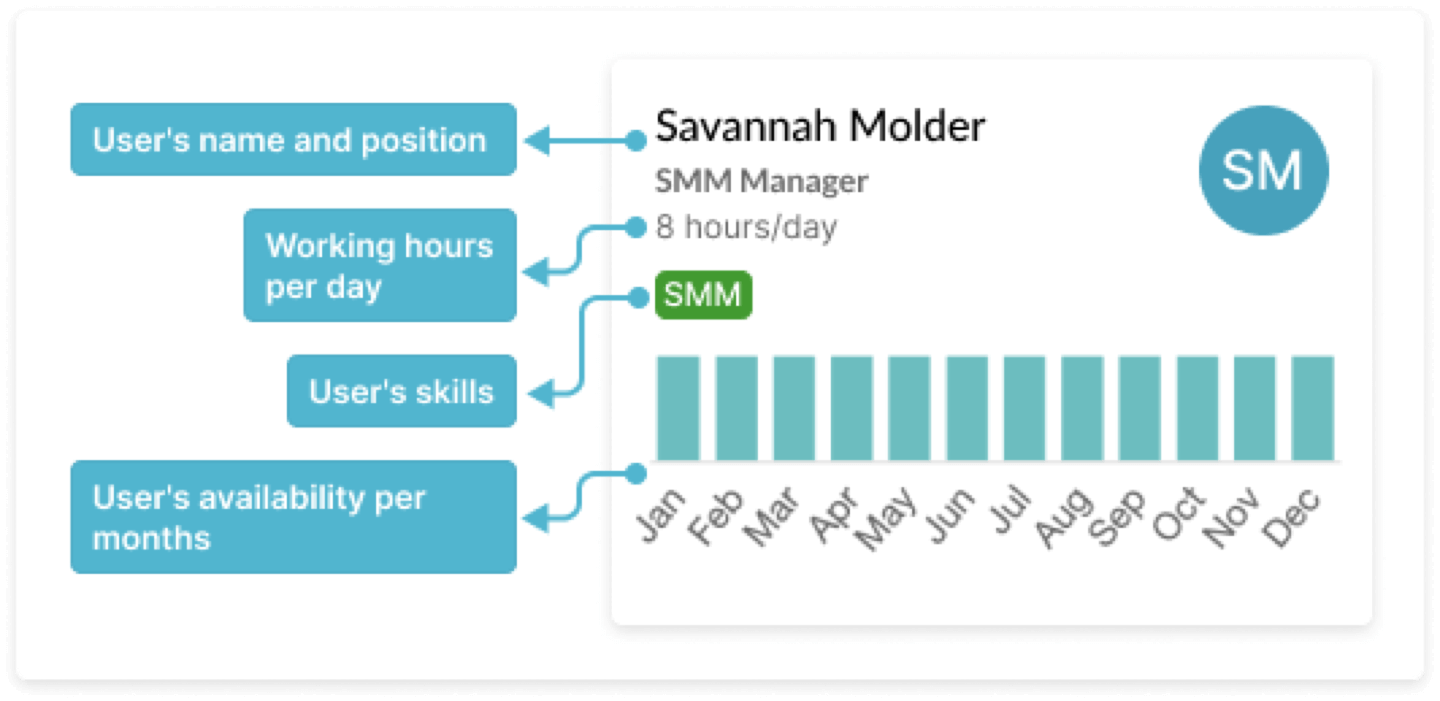
Creating Jira Issues and Custom Events
You can create Jira issues and custom events directly from the Timeline panel. The base functionality is on ActivityTimeline for daily planning and you won't need to refer to Jira. All Jira issues are synchronized from ActivityTimeline to Jira.
Custom events can be created in addition to help in your planning. It could be the bookings for daily meetings, vacation scheduling, business trip booking, sick leaves, or days off. You can customize the events according to your needs. How to do this read on the Create Custom Event page.
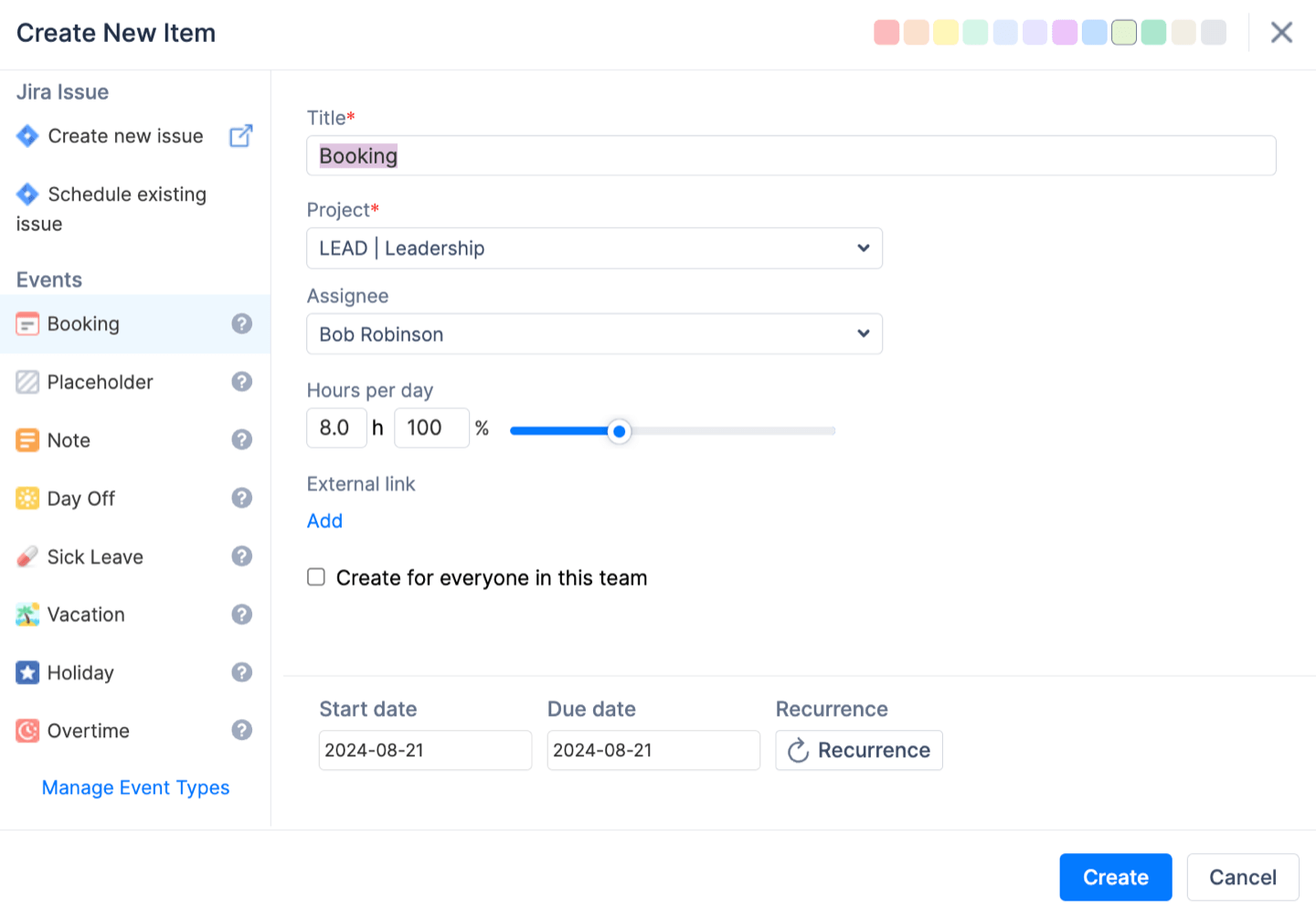
Scheduling and Assigning Work
Drag and drop the task from the left side issue panel to the timeline of a particular person who will be responsible for fulfilling the task.
For example, the screenshot below demonstrates the task which is assigned to Ted White, Business Analytics. After the task was scheduled on his timeline, the system automatically set the start and end dates of that ticket in JIRA.

Double-click on the issue card to open the view in JIRA. See the mapped Planned Start and End Dates fields values updated.

When the dates and the assignee are defined in the JIRA issue page to see changes in ActivityTimeline, click the Refresh button on the top right corner or wait till the changes are synchronized automatically (automatic synchronization happens every 10 minutes). The system will update the dashboard based on the changes made.
Individual Workload Indicator
As a resource capacity planning tool, ActivityTimeline relies on workload calculations to show if users are overalocated or underalocated. This feature helps managers adjust assignments in real time, ensuring optimal productivity and preventing burnout.
There are different interpretations of what workload is, but at its core, it refers to the total amount of work designated to a resource within a specific timeframe. Understanding and managing this effectively is crucial for maintaining a balanced team dynamic. The easiest way to check the workload is to see the workload indicator that is available under each resource:
Workload in ActivityTimeline is calculated based on the tickets that are scheduled on the user’s timeline with remaining or daily estimates and custom events.
Workload Indicator has four Modes to show Workload, Availability, Number of Issues, Worklogs and Workload.
To find out more about the Workload Indicator Modes refer to the Workload Indicator page.
The workload indicator highlighted in green indicates that the person is not overloaded.
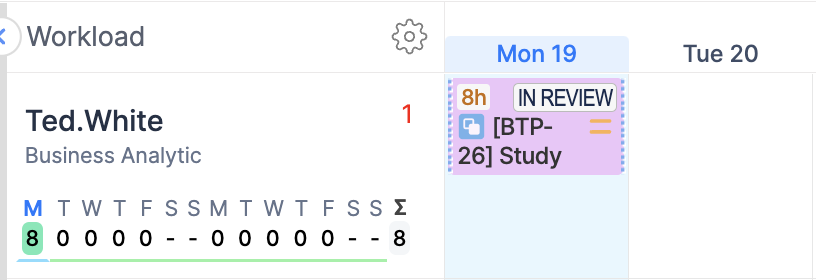
A lighter shade of green color indicates that not enough work is scheduled.
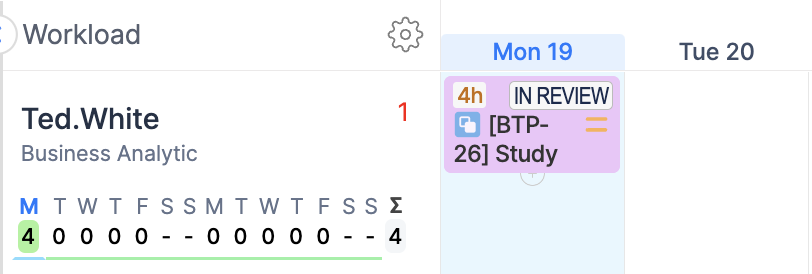
If the person is fully booked (the tasks assigned are estimated for 16 hours per day), the workload indicator shows red. This means that the person is overloaded, and signals to the manager that the schedule has to be fixed. The manager can simply resize the new task forward, and the conflict will be resolved.

